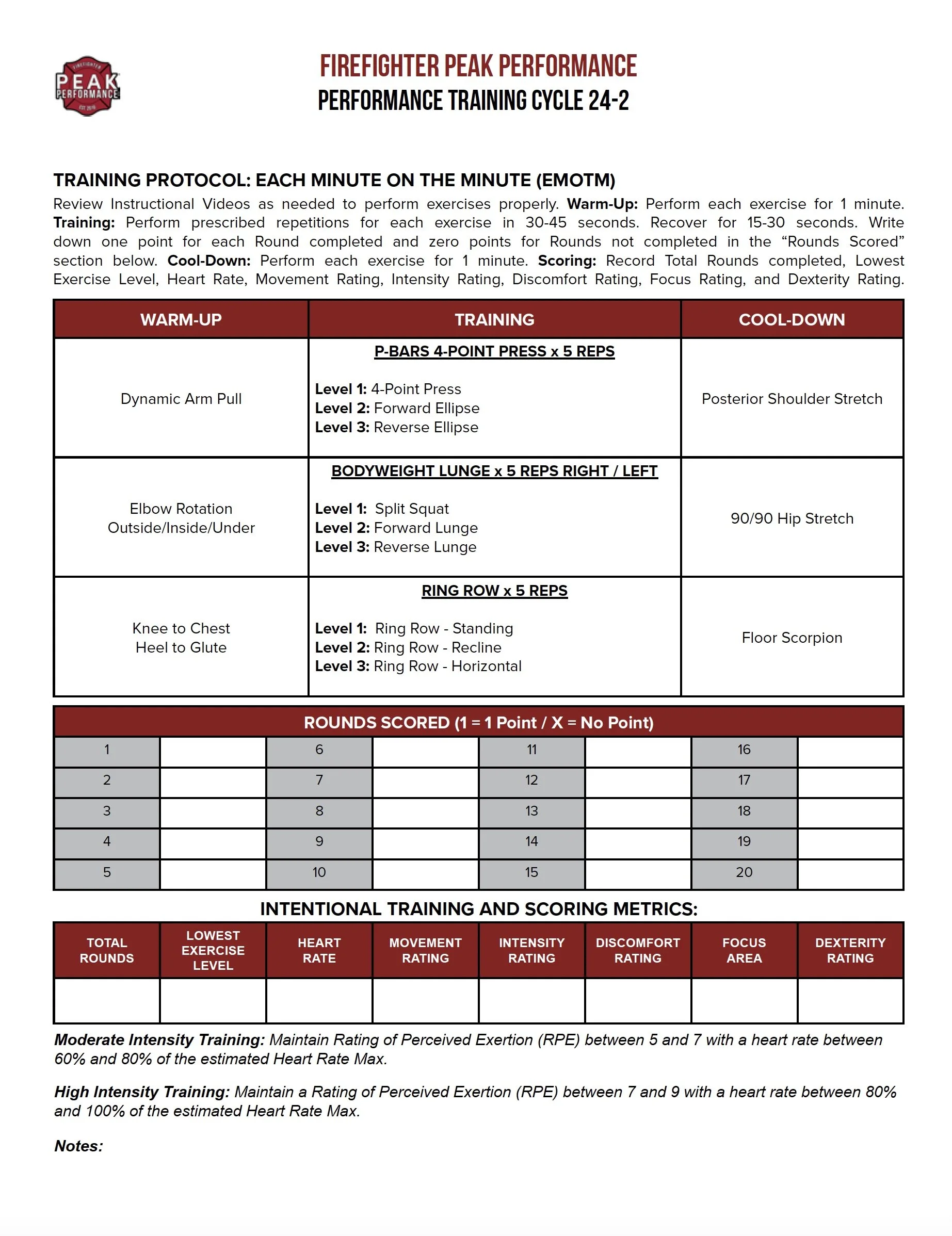Performance Training Protocol: EMOTM
By Ryan Provencher
The “Each Minute on the Minute (EMOTM)” Training Protocol on moderate and high-intensity days will tap into all three of the body’s primary energy systems in a way that is similar to the work that you do on a structure fire.
ATP-PC (Phosphagen) System: This system powers the initial burst of effort for approximately 10-20 seconds.
Anaerobic (Glycolytic) System: This system breaks down stored glycogen to produce energy without oxygen, fueling moderate to high-intensity efforts that extend beyond the initial burst.
Aerobic (Oxidative) System: This system becomes increasingly engaged as the workout progresses, using oxygen to convert carbohydrates, fats, and sometimes proteins into energy. It provides a sustainable fuel source for prolonged activity, maintains performance during later stages of the workout, and aids in recovery between intense efforts.
EMOTM Workout Instructions:
Warm-Up: Complete a dynamic warm-up specific to this workout.
Training: Perform the repetitions for each exercise as quickly as possible in each minute without comprimising movement quality. Strive for 15-30 seconds of recovery before beginning again at the top of the next minute.
If you find that you have less than 15 seconds to recover, or you feel your exercise technique is suffering, it is time to take a round off. These short breaks allow for partial recovery and adaptation to the demands of the workout, enabling you to sustain performance over the 20-minute duration.
Cool-Down: Complete a comprehensive cool-down to recover from your training session.
Scoring the Workout: Record Movement Rating, Intensity Rating, Discomfort Rating, Focus Rating, Dexterity Rating, Lowest Exercise Level, Total Rounds, and Final Heart Rate for the workout.
Workout Timer:
Workout Score Sheet:
Here is your EMOTM Score Sheet for Moderate and High Intensity Training for your “CRACKYL Tactical Workout 24-2” featured in issue #13 and “Performance Training Cycle 24-2” in your Free Membership:
Incorporating this training protocol into your firefighter physical training program will help you to manage energy expenditure, pacing, and movement quality in the gym so that you can optimize your performance on the fire ground.
Ryan Provencher is an Operations Battalion Chief with over 30 of Fire Service experience. He holds a Bachelor of Science in Kinesiology and Exercise Science with a Minor in Nutrition from Washington State University. He has extensive experience as a Fire Department Peer Fitness Trainer and Health/Fitness Coordinator, he is the founder of Firefighter Peak Performance and serves as Executive Fitness Advisor for CRACKYL Magazine.


